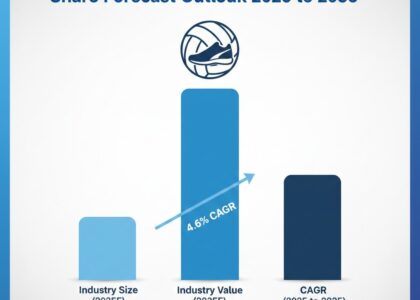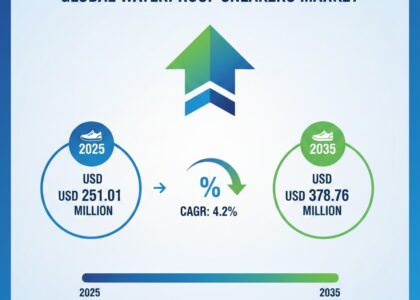
The global ready-to-eat food market is projected to expand from USD 213.92 billion in 2025 to USD 515.80 billion by 2035, at a robust compound annual growth rate (CAGR) of 9.2%. Driven by fast-paced lifestyles, urbanization, and the growing demand for convenience-oriented food options, the market continues to transform the food industry landscape. Ready-to-eat meals are becoming essential for consumers who seek quality, variety, and quick solutions in their daily lives.
Uncover Essential Data – Get A Sample Copy
https://www.futuremarketinsights.com/reports/sample/rep-gb-491
Market Concentration
While the RTE food industry remains relatively fragmented, the top players still hold a significant share of the global market. Companies like Nestlé, Kraft Heinz, Conagra Brands, and General Mills continue to lead due to their extensive distribution networks, strong brand equity, and large-scale production capabilities. However, growing consumer interest in artisanal, niche, and gourmet RTE offerings is opening space for challenger brands. This diversification is reducing the dominance of key players and creating more dynamic competition within the industry.
Get Report Link : https://www.futuremarketinsights.com/reports/ready-to-eat-food-market
Key Industry Highlights
- Steady Market Expansion: The RTE market is witnessing sustained growth across regions, particularly in urban centers where time constraints and dual-income households are increasingly common.
- Health-Conscious Innovations: Brands are innovating healthier RTE offerings with lower preservatives, higher nutritional value, and organic ingredients to meet evolving consumer preferences.
- Digital Retail Influence: E-commerce and food delivery platforms are playing a key role in expanding consumer access and driving impulse RTE purchases, especially among younger demographics.
Collaboration Between Small Market Players to Strengthen Product Portfolio
In a market traditionally dominated by large multinationals, small and medium-sized enterprises (SMEs) are leveraging innovation and agility to compete. Collaborations among these smaller players are on the rise, aimed at strengthening product portfolios and expanding geographic reach. Strategic partnerships enable local producers to co-develop ethnic and regional cuisines tailored to specific consumer tastes, improving brand visibility and market penetration. These alliances also promote supply chain resilience and cost efficiencies, essential for scalability in competitive markets.
Country-wise Insights
United States (CAGR: 7.5%): As one of the mature markets, the U.S. continues to experience steady growth fueled by demand for frozen meals, meal kits, and organic RTE products. Innovation in plant-based and protein-rich offerings is driving consumer interest.
China (CAGR: 10.2%): With rising incomes, urban migration, and an expanding middle class, China is emerging as a major growth engine for RTE foods. Domestic players are rapidly scaling, and international brands are investing heavily to localize their products.
India (CAGR: 11.8%): India represents the fastest-growing market, driven by a young population, rapid urbanization, and increasing disposable income. Regional RTE foods, vegetarian and spice-rich options, and microwave-friendly packaging are gaining traction among working professionals and students.
Leading Manufacturers
- Nestlé
- Campbell Soup Company
- Oetker
- Nomad Foods
- Vietnam Hanfimex Corporation
- Danone
- General Mills Inc.
- McCain Foods Ltd.
- California Pizza Kitchen
- Conagra Brands, Inc.
- MTR Foods Private Limited
- Atkins Nutritionals, Inc.

Explore Convenience Food Industry Analysis : https://www.futuremarketinsights.com/industry-analysis/convinience-food
Key Segments
By Product Type:
By bean species, methods industry has been categorized into Breakfast Cereals, Instant Soups & Noodles, Ready Meals, Snacks and Baked Goods & Confectioneries
By Sales Channel:
By product, industry has been categorized into Supermarkets & Hypermarkets, Convenience Stores and Online Retail
By Region:
Industry analysis has been carried out in key countries of North America; Europe, Middle East, Africa, ASEAN, South Asia, Asia, New Zealand and Australia





